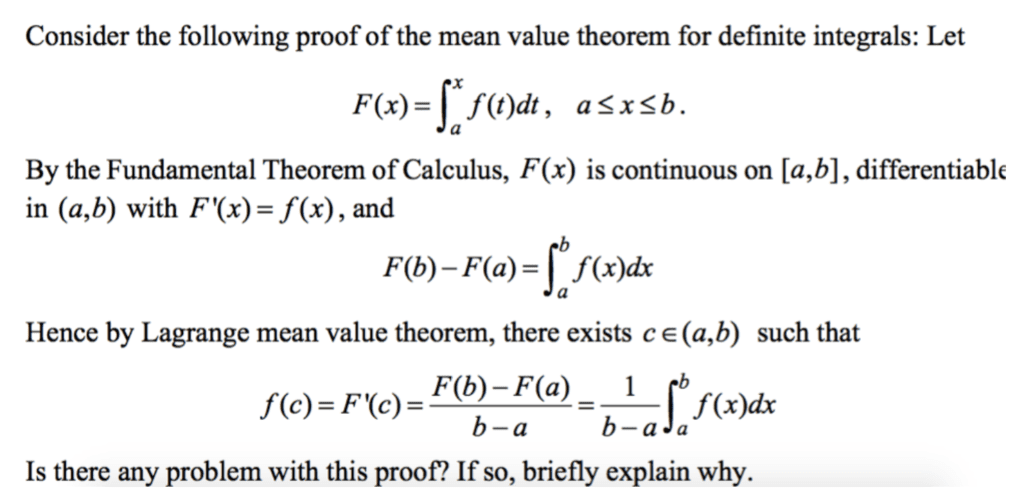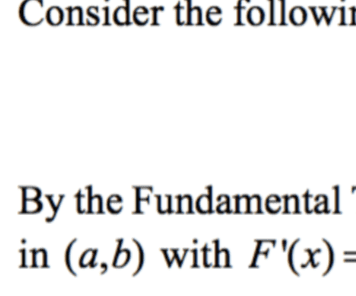MATH 140 Lecture Notes - Lecture 18: Antiderivative, Constant Function, Quadratic Formula
Document Summary
Then f is a constant: theorem 4. 6b: let f and g be continuous on [a, b] and assume that f"(cid:523)x(cid:524) = g"(cid:523)x(cid:524) for all such that (cid:1858) (cid:4666)(cid:1855)(cid:3028)(cid:4667)=(cid:4666)(cid:4667) (cid:4666)(cid:3030)(cid:4667) (cid:3028: proof: let x be any number in (a, b). Then there is, by the mvt, a number cax: proof: let h(x) = f(x) g(x) for x in [a, b]. then h is continuous on [a, b]. x in (a, b). Then there is a c such that f(x) = g(x) + c for all x in [a, b]. Then f(x)=f(a) for all x in (a, b). So f is a constant function. function: h"(cid:523)x(cid:524) = f"(cid:523)x(cid:524) g"(cid:523)x(cid:524) = 0 for all x in (a, b). Then by theorem 4. 6a, h(x) = a constant c for all x: = (cid:4666)(cid:1876)(cid:4667)=(cid:1858)(cid:4666)(cid:1876)(cid:4667) (cid:1859)(cid:4666)(cid:1876)(cid:4667, so, (cid:1858)(cid:4666)(cid:1876)(cid:4667)=(cid:1859)(cid:4666)(cid:1876)(cid:4667)+ for all x in [a, b], so f is a vertical shift of g. By the mvt, there is a c between x and z with (cid:1858) (cid:4666)(cid:1855)(cid:4667)=







